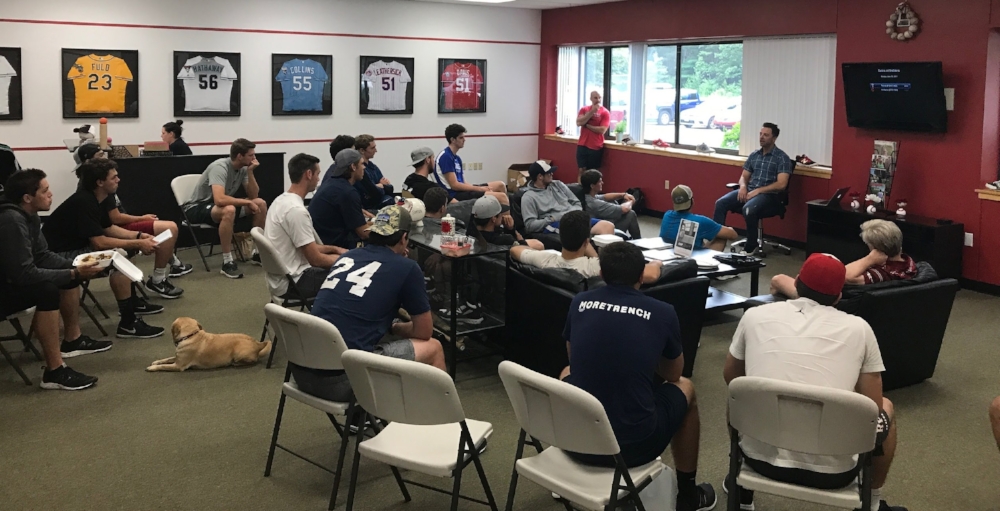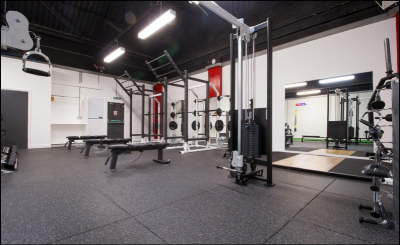You capture a fitness niche by gaining a reputation for understanding the unique training needs of a specific demographic. This will bring leads through the door. But once the leads arrive, what’s the key to keeping them under your roof?
People ask me all the time: “Are you concerned that your internship program is effectively creating huge competitive threats for your business?”
Yes. Yes I am.
However, there’s a big difference between staying appropriately concerned with a constantly evolving competitive landscape, and feeling threatened by skilled coaches delivering a similar training experience within the same segment of your field.
Understanding the needs of the baseball community isn’t rocket science, and it hardly qualifies as something we at Cressey Sports Performance (CSP) treat as a trade secret. Anyone who has signed up for Eric Cressey’s newsletter or tracks his blog knows that our approach to assessment and programming for ballplayers is thoroughly outlined in material he’s made available to anyone with an internet connection.
At CSP, we are “appropriately concerned” about the training alternatives that our clients have to choose from. Awareness of alternatives is one thing, but feeling threatened by them is a whole other. Hindering our own services, growth, or employee satisfaction as a result of this concern would be a disservice to CSP.
I’d feel threatened if all we had to fall back on was the training knowledge that we had sprayed all over the internet. Instead, we have spent years accumulating a series of differentiators that ultimately serve as the buffet of a la carte perks that come with being a member of the CSP Family. I’m not talking about scientific knowledge or even on-the-floor coaching experience.
Let's talk differentiators...
I’m talking about the under-the-radar extras that only accumulate with time. Things like:
Relationships with the college coaches, regional scouts, and athlete representation agencies that actually have the best interest of their/our athletes in mind when they recruit participants for their programs. I’m talking about the kind of people who share our emphasis on integrity and values.
An appreciation for the intricacies of the recruiting process at all levels.
Complimentary service professionals who not only understand how to deliver an exceptional client experience, but also fully grasp how their offering aligns with (and compliments) participation in our program. (Manual Therapy and Pitching Instruction are perfect examples)
A small army of MLB-affiliated athletes who are excited to participate when we ask if they’ll contribute to our annual “Night With The Pros” event. Minor league players who leave complimentary tickets without hesitation for anyone who identifies as a member of the CSP Family. Big leaguers who are excited to leave field passes for batting practice for our clients who are excited to see fellow “CSP guys” in action at the highest level of the game.
Close to 200 former interns spread all over the globe who are thrilled to welcome athletes through their doors with CSP programs in-hand as they roll through town in need of a place to get a quick lift in.
If there’s one recurring theme in this series of examples, it is that our network and our relationships are as important as our ability to screen an athlete for baseball-specific faulty movement patterns. Relationships are the perks that a client has to step away from if they step away from CSP in favor of an alternative strength training provider.
If you’re a gym owner who spends all of his time worrying about measuring your key performance indicators, you’re going to lose sight of the value in relationships. I can’t effectively track the monetization of sharing our wealth of contacts and connections, but I can say with certainty that these factors are key players in our long term retention strategy.
If you want to stand out in a niche featuring endless copycat alternatives, offer something that can’t be easily recreated. Relationships aren’t manufactured by emulating some sort of blueprint pulled off of the internet. They’re earned, and they’re the most underappreciated component of my answer to the question: “What makes you guys different?”


























